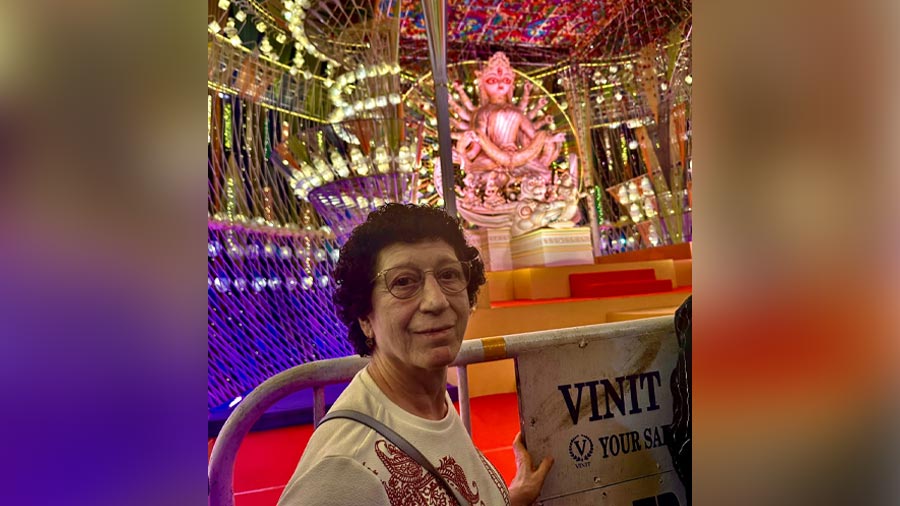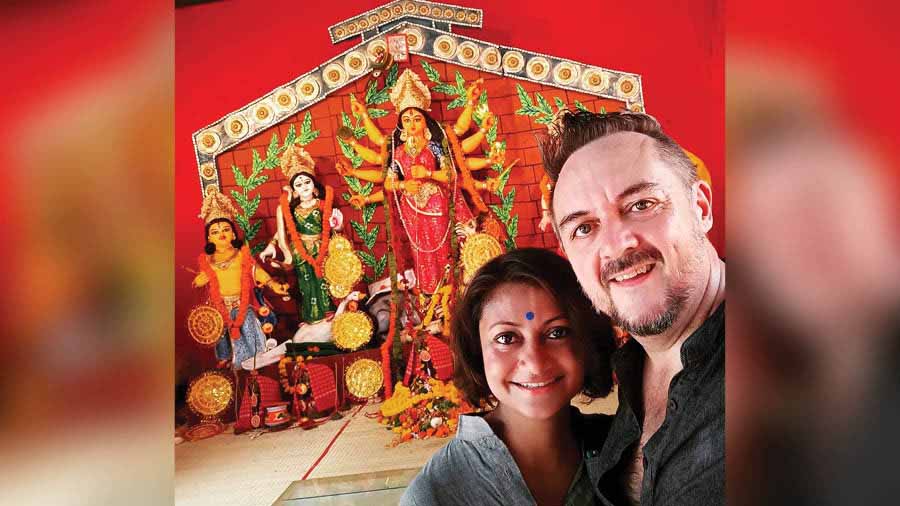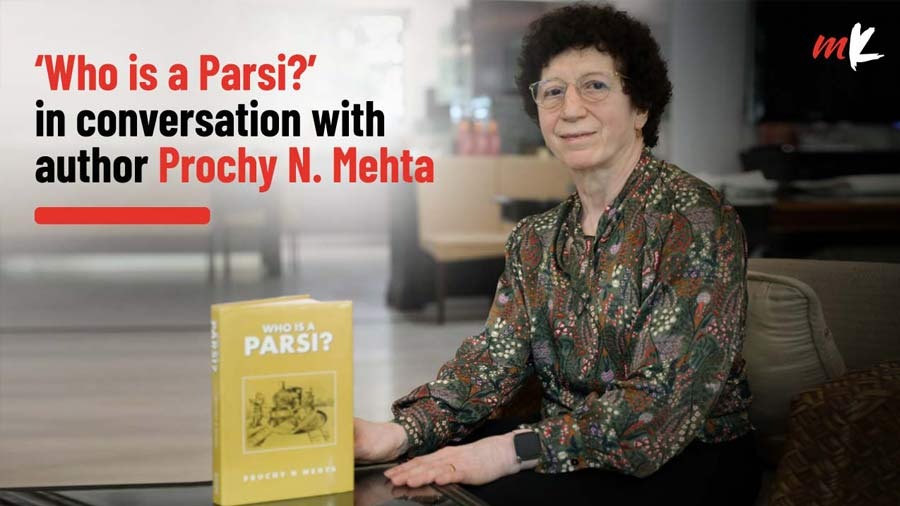Durga Puja, for me, has always been a time to celebrate, a break from the routine of school and college, an opportunity to go on family holidays, a chance to relax and even a window to study as Puja always came before an examination.
My husband, Noomi, recalls studying for his Chartered Accountancy finals, with the iconic dialogue from Sholay blaring from the loudspeakers. Luckily for him, he passed his exam, but the Sholay dialogue has etched itself into his memory. To this day, he can recite it: “Wapas aa gaye… Khali haath?”
It was only much later, when I was invited to inaugurate a puja pandal, that I really understood and appreciated the significance of Maa Durga. This realisation, I believe, resonates with many of us — we often follow religious traditions without fully comprehending their deeper meaning and just do things by rote.
Pandal hopping is one of the highlights of Durga Puja celebrations. As youngsters, we would form a group, hop on our motorcycles, and try to get a glimpse of the beautiful pandals, starting from Maddox Square.
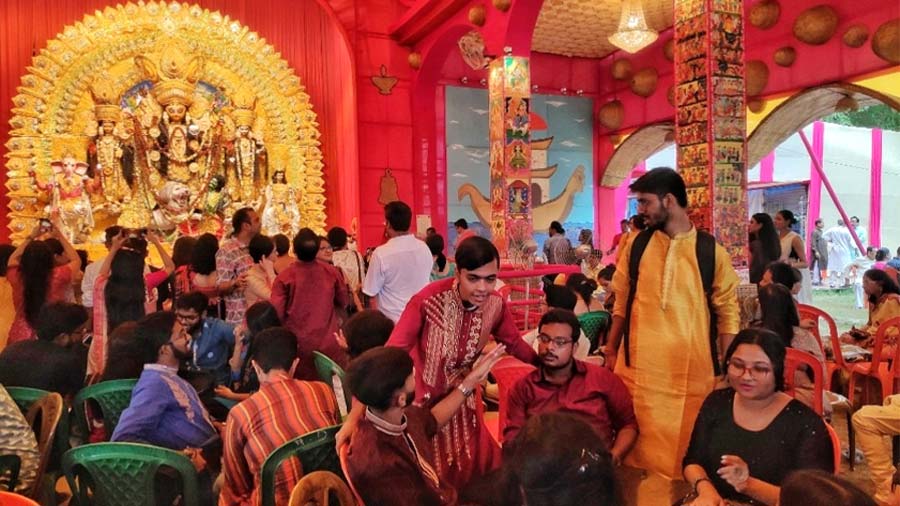
As youngsters, Mehta and her husband would go on a motorcycle pandal-hopping tour, starting from Maddox Square
Over the years, the artistic representation of not only the idols but the entire ambience of the pandals has evolved and improved. We are proud that UNESCO has recognised Durga Puja in its Intangible Cultural Heritage of Humanity list.
I asked community members to describe what Durga Puja meant to them in one short sentence…
Behnaz Bulsara Dugar wrote, “For me, Durga Maa is a reminder that empowerment is an ongoing process of ensuring women have the opportunities, rights, and resources to achieve their full potential.”
Trista Heerjee Madan, writes, “Happy faces, joy all around in spite of the chaos.”
Roda Bulsara felt that it is a festival that is “always giving hope and joy to so many.”
“Durga Puja is more of a annual cultural celebration than a religious culmination leading up to Bijoya Dashmi,” thinks Percy Siganporia.

L-R: Roda Bulsara, Trista Heerjee Madan, Percy Siganporia and Behnaz Bulsara
Khursheed Ardesher Vatcha, a schoolteacher in Modern High School asserts, “it means family coming together, good food and social amity.”
Aban Desai, proprietor and curator of Tejas Art Gallery, feels it is “a celebration of Streeshakti, of good values, of life”.
Varez Dadina says “it is the greatest art show on earth.”
Sharmeen Rabadi Zarras, who is now settled in London, writes that Durga Puja signifies “the power of women over evil”.
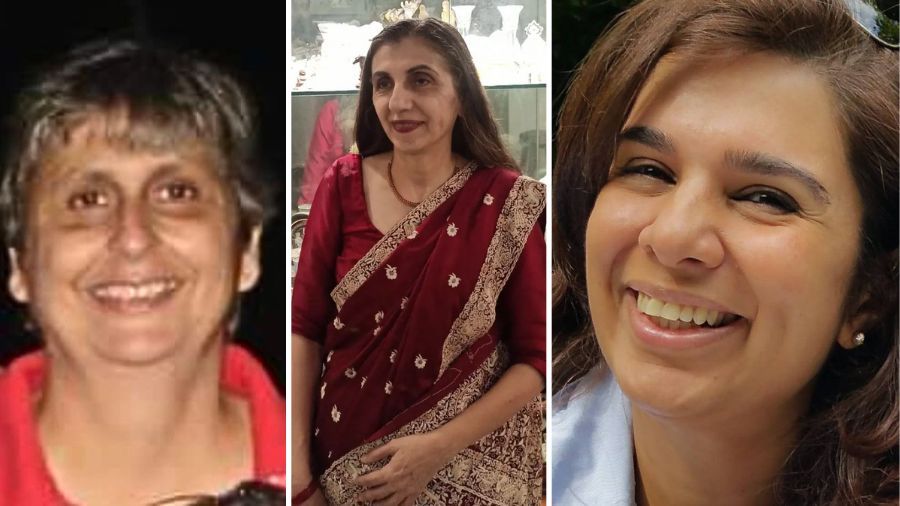
L-R: Khursheed Ardesher Vatcha, Aban Desai and Sharmeen Rabadi Zarras
Rohinton Indorewala, former trustee of CZCRCF, reflects, “Pujas mean a kaleidoscopic of lights, decoration at its zenith, fabulous food and a general time of mirth and merriment. Foes and friends come together.”
Lastly, Ratan Postwalla observes, “ The most amazing thing about Durga Puja is that it has quite seamlessly transcended religion and become a true ‘community’ festival, which everyone in the state celebrates together, regardless of their religious beliefs. A great example of the magic of inclusiveness.”

L-R: Rohinton Indorewala and Ratan Postwalla
These one-sentence reflections paint a vivid portrait of a festival that goes beyond religious practices. Durga Puja is a celebration of empowerment, hope, joy, cultural heritage, family, and above all, a community spirit. In Kolkata, a city known for its diversity, Durga Puja shines as an example of inclusivity, where the lines between friends and foes fade away, and the joy of celebration takes centre stage, just like the goddess Durga stands triumphant over adversity.
Here’s wishing you a happy Durga Puja!
Prochy N. Mehta is the author of ‘Who is a Parsi?’ and ‘Pioneering Parsis of Calcutta’. She is an Asian record holder in sports and also the first female president of the Calcutta Parsee Club.
